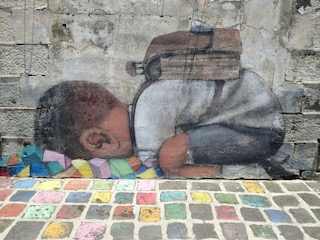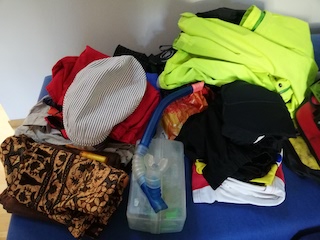
Airport – Mahebourg – Souillac – Le Morne – Quatre Bornes – Flic-en-Flac – Port Louis – Grand Baie – Belle Mare – Blue Bay – Airport
(430km cycled)
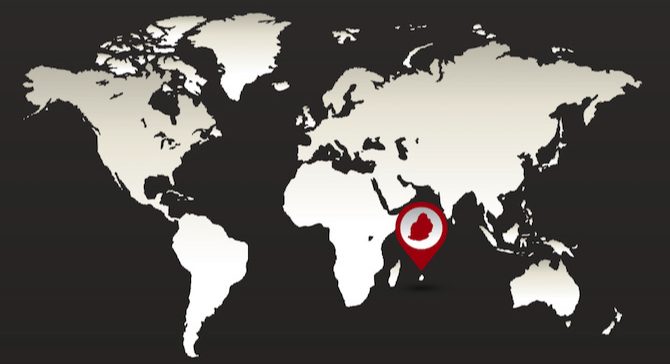
Mauritius was to be a surprise for Darina!
Well, short after Kurt had booked the flights, Darina mentioned this very same island as a possible summer destination. Kurt was so unprepared that his abrupt refusal to entertain the suggestion was a total giveaway. A few months of painful evasive refusals did nothing to change Darina’s certainty that the Indian Ocean was indeed on the cards. On a positive note, Kurt had no doubt about the popularity of his decision!
A direct flight with Edelweiss brought us to this tropical paradise. And what’s even better, this Swiss carrier allows one piece of luggage of up to 23 kg plus one sports item (i.e. a bike) as free luggage allowance. What they didn’t offer was a glass of bubbly to celebrate the arrival of New Year somewhere over the Equator. Or maybe they did… and we slept through it! 30 degrees Celsius greeted us upon arrival and a short early-morning ride led us to Blue Bay, where we had our first swim in the perfectly tempered ocean. That set the course of the holiday. Seriously, on an island of 2,040 square kms, all those white sand beaches are a lot more important than 80km days!
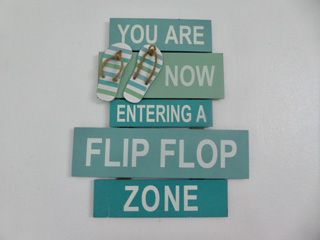
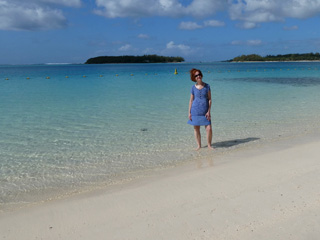


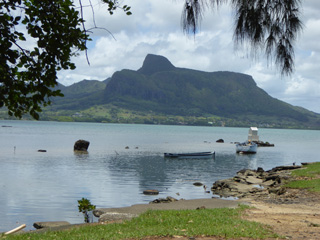
We decided to loop the island clockwise so that we would always be on the right side of the road to allow for a quick dip. You got it! There’s left-hand traffic in Mauritius – i.e. the Brits have been there. Perhaps it’s time for a brief history of Mauritius’ short history!
The island was basically uninhabited until the Dutch landed in the 16th century, named the island Mauritius, stripped it of ebony, saw the extinction of the Dodo, and left. In the 18th century, the French arrived, imported thousands of slaves from Madagascar, Mozambique and West Africa, concentrated on sugar production and named the island Ile de France.


The British took over at the beginning of the 19th century and renamed the island Mauritius. At that time, of the 78,000 living on the island, 63,000 were slaves. Slavery was soon abolished just to be replaced by a ferocious HR scam in the form of indentured labour, with workers arriving from India. As time went by, Chinese traders settled on the island, and by the middle of the 20th century, Mauritius was ready for independence, which was achieved by peaceful means in 1968. About one percent of the island’s present population of almost 1.3 million are white, descending from the slave owners of yesteryears.
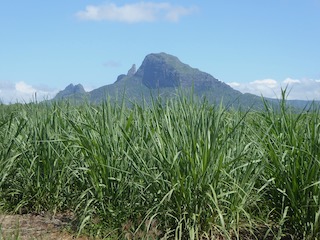

Although the official language in Mauritius is English, we were always greeted in French, as it’s closer to the Creole language the locals speak. Many place names are still written in French or called after British towns.
The first day out of Mahebourg was a bit grey, in sync with our ride to Gris Gris (Grey Grey) beach on the south coast.



Numerous colonial houses dot the island and offer a full tourist program on their grounds, including tours of the houses, gardens, waterfalls, aviaries, sugar factories, rum distilleries, and souvenir shops! Most offer traditional Mauritian lunches, and some have even guest rooms if you fancy stepping back in time. Saint Aubin is one such house that offers a vanilla plantation tour and rum tasting session as part of the deal.
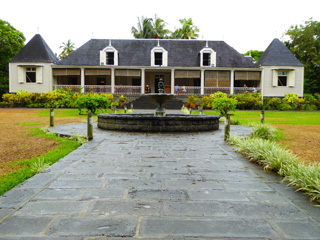

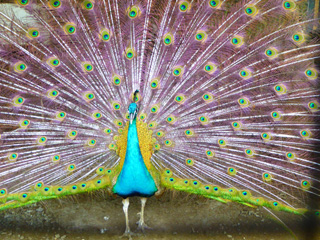

It was all very flat cycling along the south coast and out around Le Morne peninsula, where international kite surfers were strutting their stuff in great numbers.


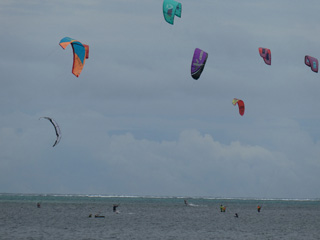

We did have one strenuous day with a climb of 1,000 altitude meters. At 30°C and humidity at saturation point, it was definitely a workout, but it did take us to some of the island’s top sights. These included the Chamarel Waterfall, the Seven Coloured Earths, a lookout over the Black River Gorge and Grand Bassin, with its important Hindu temples.

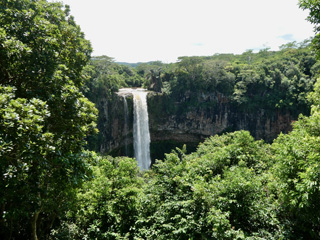


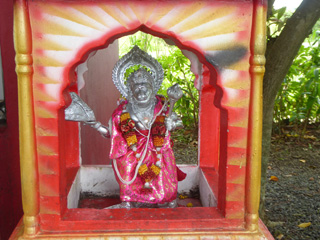
The Seven Coloured Earths is a beautiful geological phenomenon where the volcanic rock has been broken down into sand, sporting the colours of the various minerals present.

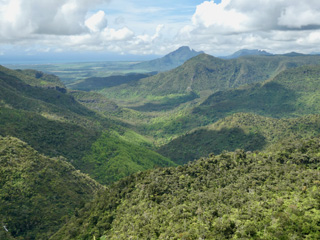
About 50% of Mauritians are Hindu, and there are some beautiful shrines, including some in private gardens. The huge shrine complex with countless statues built at the crater lake of Grand Bassin is considered to be the most sacred Hindu site in Mauritius as well as one of the most important pilgrimage destinations outside of India. The water in the lake is said to contain water from the Ganges, thanks to a local priest who returned from India with some precious Ganges water in his backpack! It was all very quiet the day we visited, except for a seriously thorough blessing of a brand new car’s inner anatomy.


Cycling in the highlands was very pleasant, and we even came across the tea plantations of Bois Cheri, the local brew.


When in the area it’s worth checking out Maison Eureka from the good old times (if you look at it from a colonial perspective) of master and 1,000 servants.


Another historical marker is the St Martin Jewish cemetery in Beau Bassin. In 1940 almost 3,600 Jewish refugees, fleeing Nazi persecution in Vienna, Gdansk and Prague, were refused entry to British-ruled Palestine and deported to the British colonies of Trinidad and Mauritius, where they were interned in prison camps until the war ended. Of the 1,600 detained in Mauritius, many finally made it to Haifa in 1945. The 128 that didn’t survive the camp’s horrific conditions were laid to rest in this cemetery. “The Last Brother” by Nathacha Appanah is a heart-wrenching novel based on this tragic chapter of Mauritian history and quite reminiscent of “The Boy in Striped Pyjamas” by John Boyne.
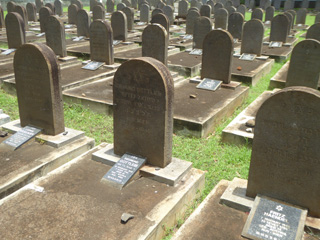

Being in the Indian Ocean, Kurt decided to go for a dive and chose Flic-en-Flac, based on internet research. As the dive centre was in one of the five-star resorts, Darina got to see how the other half live, while Kurt was checking out the underworld. He came back a little non-plussed by the whole experience, and by that time, Darina was also ready to move on!

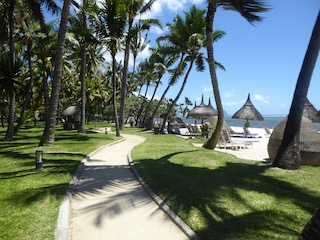

The capital of Mauritius, Port Louis, has a modern waterfront with all the shopping and eateries you could ever want. A busy, colourful market and happening Chinatown will cater for any remaining wish. It is also the site of the world’s second oldest race course; only Ascot in England predates it. The town is definitely worth a day of beach abstention!




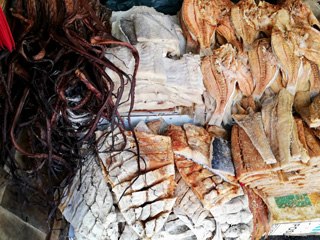
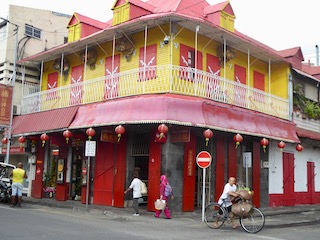

After Hinduism, Christianity is the next most populous religion in Mauritius, representing about 30% of the population. However, Mauritians of all creeds make their way to the tomb of one Christian, who has become known as the Apostle of Mauritius.
In the 19th century, a late vocation French priest and former doctor, Jacques-Désiré Laval, spent the last 23 years of his life as a missionary, working with the recently-freed slaves on the island, converting no less than 67,000 to Christianity. His cure of a man with acute eczema was deemed a miracle and led to his beatification by Pope John Paul ll in 1979. Pope Francis prayed at his tomb outside Port Louis when he visited in 2019, and local street art is already in position to celebrate his imminent canonisation.

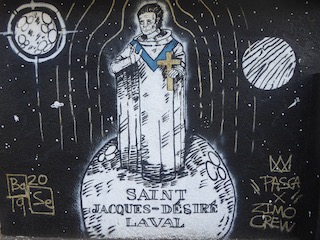

The north is all sugarcane country, bordered by more of these marvellous white-sand beaches. Like the rest of the island, some are private, belonging to resorts, but a lot are public and very well kept by state employees, who rake the sand and shady spots under the trees on a daily basis. At weekends, a few of the more popular ones can get quite crowded, when whole families congregate with tables, chairs, cookers and ghetto blasters. It’s generally all good-natured, but if it’s too loud or busy, just move to the next beach, a short spin away.




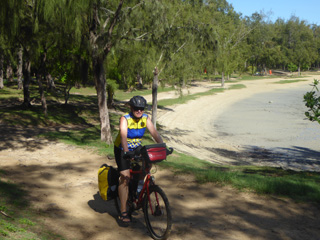
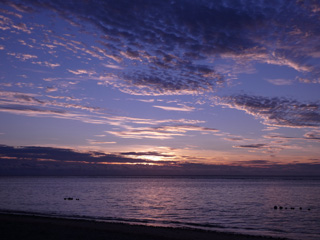

The Pamplemousses Botanical Gardens are well worth a visit. Not just for the giant waterlilies and the lotus ponds, but also for the different trees from all around the globe. Actually, the giant water lilies (Victoria Amazonica) with a diameter of up to 3m, were introduced to the gardens from Brazil in 1927 by the garden director, Charles O’Connor (no doubt of Irish decent!), and have been the greatest draw ever since.

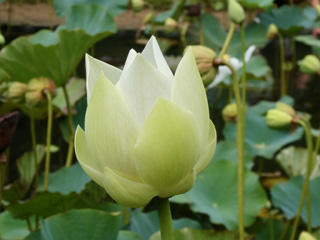
Built by the French at a time when the Dutch had secured the Spice Islands, and the English and French Empires had become global, the botanical gardens were a place to grow spices and ornamental plants as well as foodstuffs for the displaced labour force. Gardening became a hobby for the wealthy, and handsome prices were paid for exotic flowers from far-flung destinations.
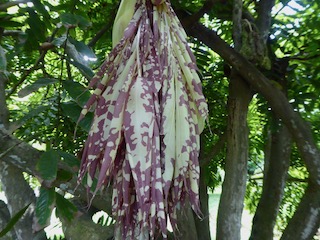

Nutmeg is a prime example of the usefulness of botanical gardens back then. Native to Indonesia and under Dutch control, who carefully guarded their 60,000% markup, nutmeg was a prime target for smuggling. Especially after some doctors in London claimed that it could cure the plague.
Pierre Poivre, the garden director in the 1760s, had a few trees smuggled out, together with clove and cinnamon. He planted them in the gardens, before passing on the new seedlings and expert know-how to other colonies. The British did the same, bringing them to Singapore, Zanzibar and later to Grenada, in the Caribbean.
For an interesting read about how the British and Dutch fought hammer and tongs over nutmeg at the beginning of the 17th century, check out Nathaniel’s Nutmeg by Giles Milton.

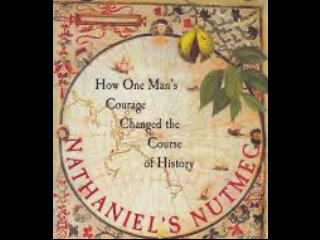

Where the mountains come right down to the sea in the east, we found the road the most scenic. This was also where poverty was most visible, with a lot of corrugated iron shacks for houses. The country did introduce a Marshall Plan in 2015 to fight poverty, with a leaving-no-one-behind principle as part of the vision for 2030. Education, housing, health and the empowerment of women and youth are on the agenda. It is estimated that 8% are living below the income poverty line.

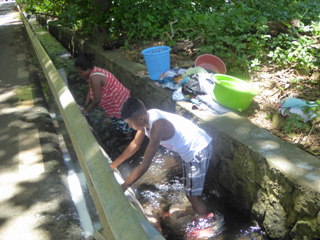

Vieux Grand Port‘s small museum recounts the entries and exits of the Dutch, French and British. It is actually right next to the ruins of the first French settlement, built on top of the abandoned Dutch Fort, which was given up after Port Louis was developed as a new capital.
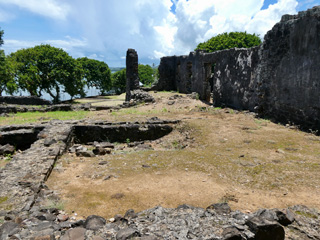
The trip ended as it began, with a swim and snorkel in Blue Bay and then an early morning ride to the nearby airport.
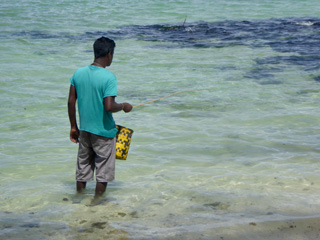

We can recommend Mauritius as a cycling destination if you’re happy with a lot of beach stops and 100km days are not a priority! Traffic can be dense enough in cities, but we never found it hostile or threatening. The mountain roads in the southwest are a bit of a challenge in the heat – just start earlier than we did 😉 Most roads are paved, but we often followed a sand track in the shade of the trees lining the beach.

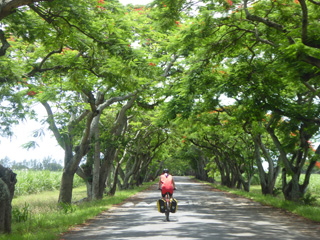
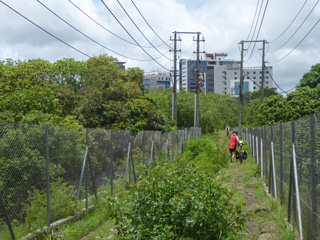
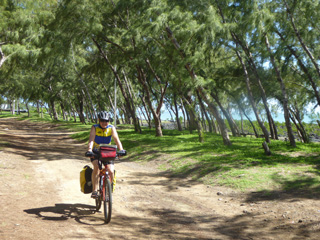

We found the people to be very friendly and relaxed. A mix of servants’ and masters’ descendants, they have managed to leave that chapter of history behind them and build a prosperous country, where financial
services, IT, textiles and hospitality keep them busy.

While the sugar industry was the mainstay of the economy during colonial times and is still the biggest agricultural sector by far (85% of the arable land produces 600,000 tonnes of sugar each year), it just represents about 3.5% of the GDP today. An interesting development to meet the increased energy demand on the island is the use of sugarcane trash as fuel in boilers for the production of bioenergy.

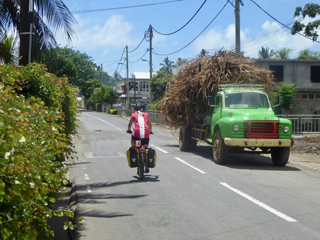
The food is as diverse as the people. You can find Indian, Chinese and European restaurants, and any blend of the same would be Mauritian cuisine. A favourite snack was Dholl Puri, a chapatti wrap with lentils, beans and a spicy sauce, with or without chicken.
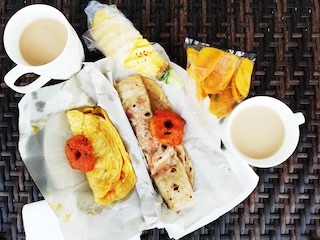



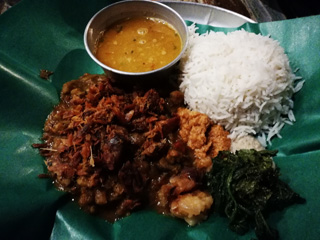
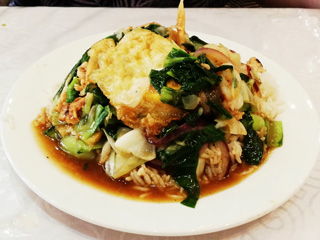

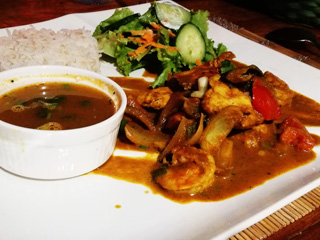
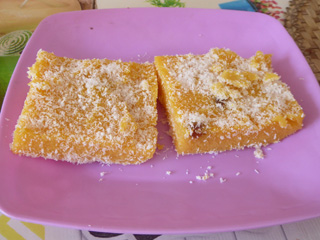


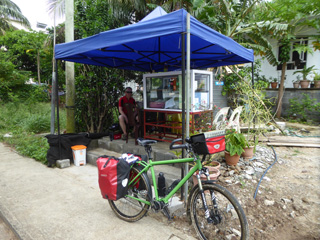

Prices were very reasonable. A spacious apartment with kitchen, and sometimes even a washing machine, cost 30-40€/night. That suited us fine, as resort prices started at 350€/night! Lunch in the form of snacks at roadside or market stalls were around 1-2€/person, and an evening meal set us back 10-15€/person. A 0.6l beer went for a fiver plus.

Birdlife is very colourful, and we spent a lot of time aiming our lenses at these feathery friends as well as a few unfeathered ones. Flora didn’t disappoint either!
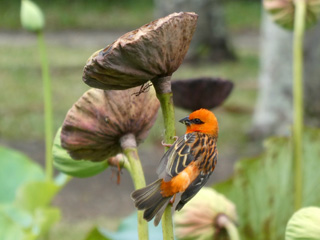
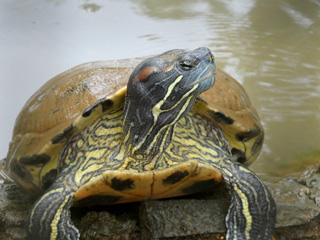
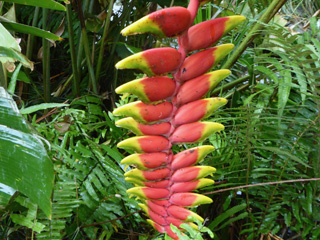
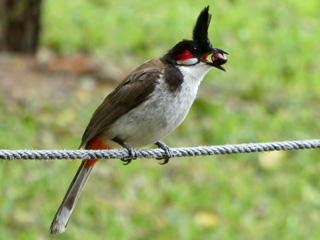
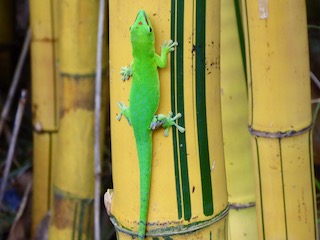
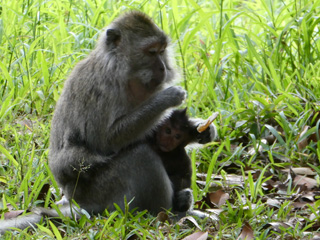
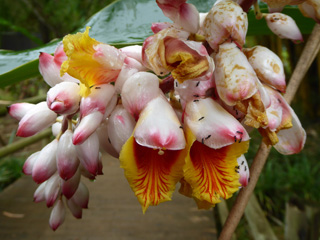
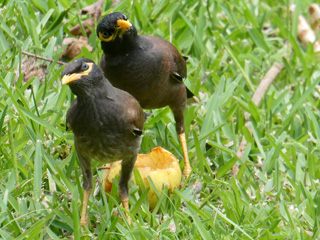
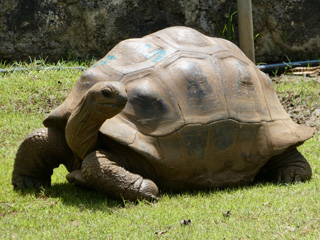
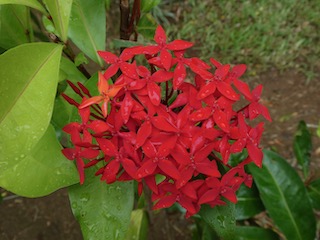
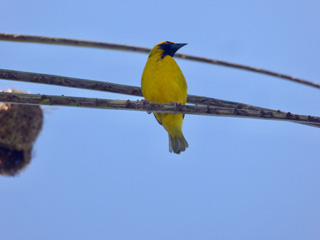
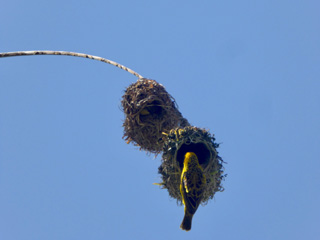

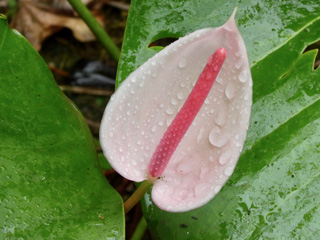
Mauritius was made first and then heaven, heaven being copied after Mauritius. Or so Mark Twain once put it.
Not so sure if there are beaches in heaven, but it would be hard to beat those in Mauritius. Nevertheless, at the rate resorts are still being pulled out of the ground, it won’t be long before you have to search long and hard beneath the pavement for the real Mauritius. Let’s hope heaven knows when to shout Stop!
